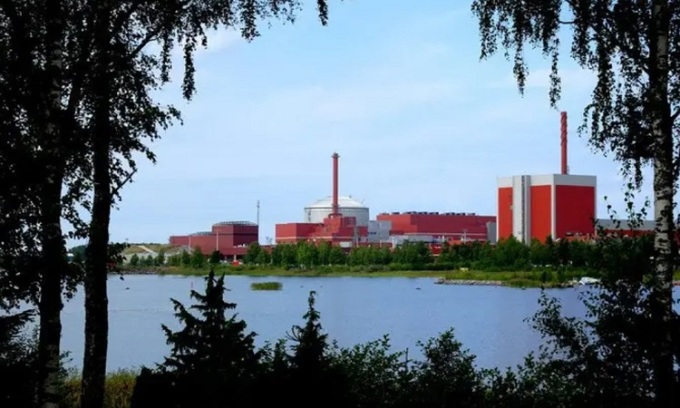Finland is facing the rare situation of having such abundant clean electricity that electricity prices have gone negative.

Olkiluoto 3 power plant in Eurajoki, Finland. Photo: Reuters
As countries across Europe grapple with energy crises, electricity prices in Finland went negative earlier this week, Insider reported on May 25. When electricity prices go negative, it means that the supply of electricity in the market exceeds demand. While it may seem counterintuitive, negative electricity prices can have both positive and negative effects.
On the positive side, this situation benefits consumers by leading to lower or zero electricity costs, resulting in lower electricity bills. However, negative electricity prices can create financial challenges for power producers. They may have difficulty paying their operating costs and generating revenue. This will affect profits and investment in future energy projects.
The average electricity price is slightly below zero, due to two main reasons: an unprecedented surplus of renewable energy and a drop in electricity consumption by Finnish people due to the crisis caused by the Russia-Ukraine war. This marks a reversal for Finland, which last winter was still facing an energy crisis after the government banned electricity imports from neighboring Russia in protest at the war in Ukraine.
However, the situation changed dramatically with the inauguration of a new nuclear power plant in April this year, which will provide a large amount of electricity to Finland's 5.5 million people. Called Olkiluoto 3, this is the first new nuclear power plant to come online in Europe in over 15 years. This has resulted in a 75% reduction in electricity prices in Finland (€245.98/megawatt-hour from December 2022 to €60.55/megawatt-hour in April 2023). In addition, with the goal of being carbon neutral by 2035, Finland is still actively pursuing renewable energy solutions, with wind power becoming the dominant energy source by 2027.
In addition to the two factors mentioned above, the recent spring floods in some Nordic countries also caused a sharp drop in electricity prices. The rapid melting of snow and ice forced Finnish hydropower plants to operate at full capacity, resulting in a surplus of output. "During the spring floods, the hydropower plants had very poor regulation capacity because the amount of water was so large that they could neither slow down nor stop production," said Jukka Ruusunen, CEO of grid operator Fingrid.
In such a situation, Finnish producers will need to pay more attention to output regulation solutions to avoid losses.
An Khang (The Tech Times )
Source link



































































































Comment (0)